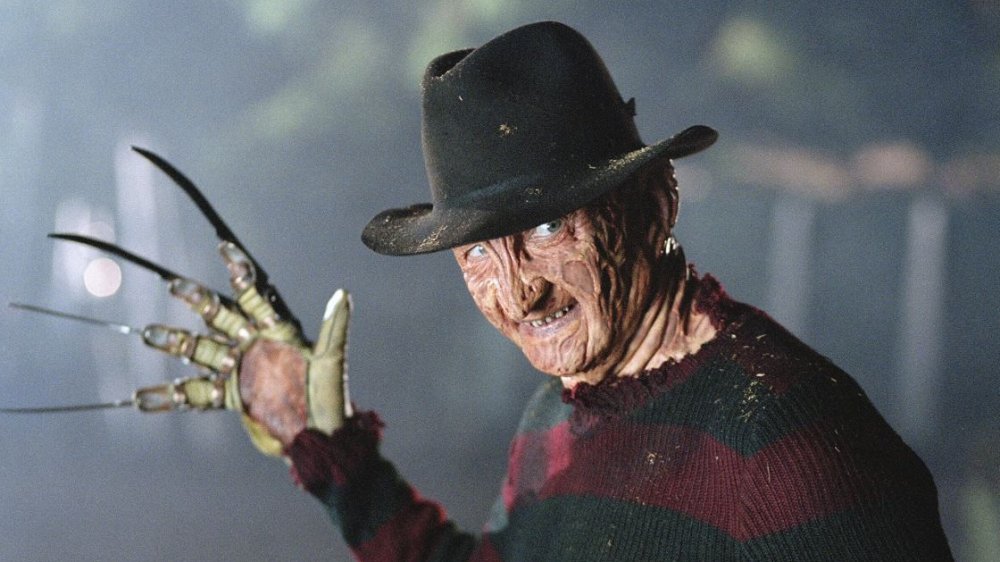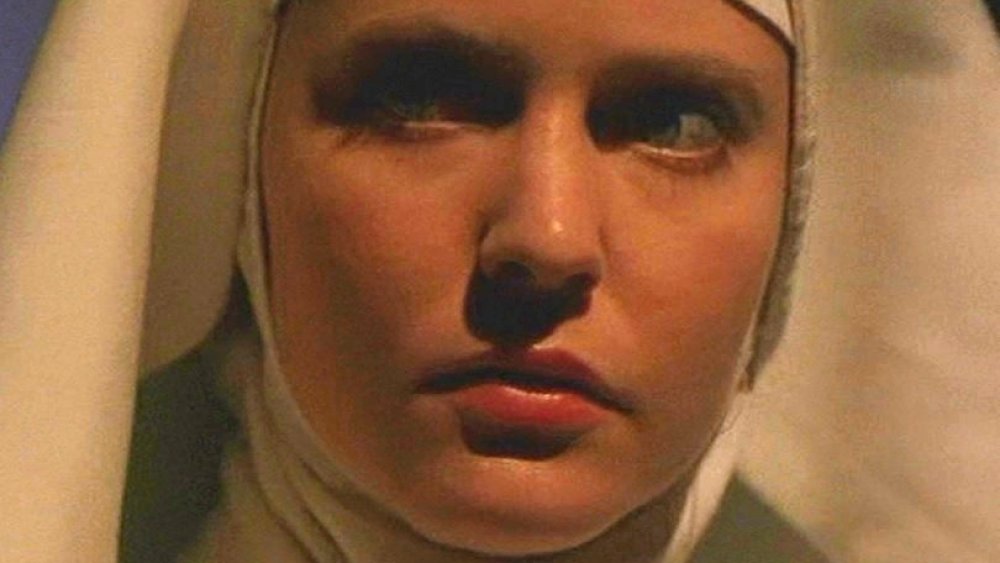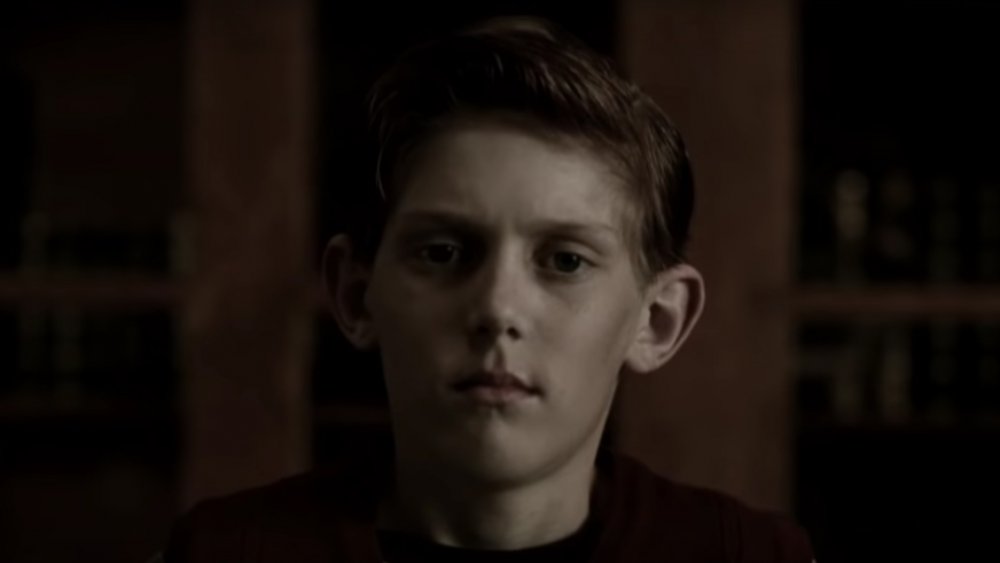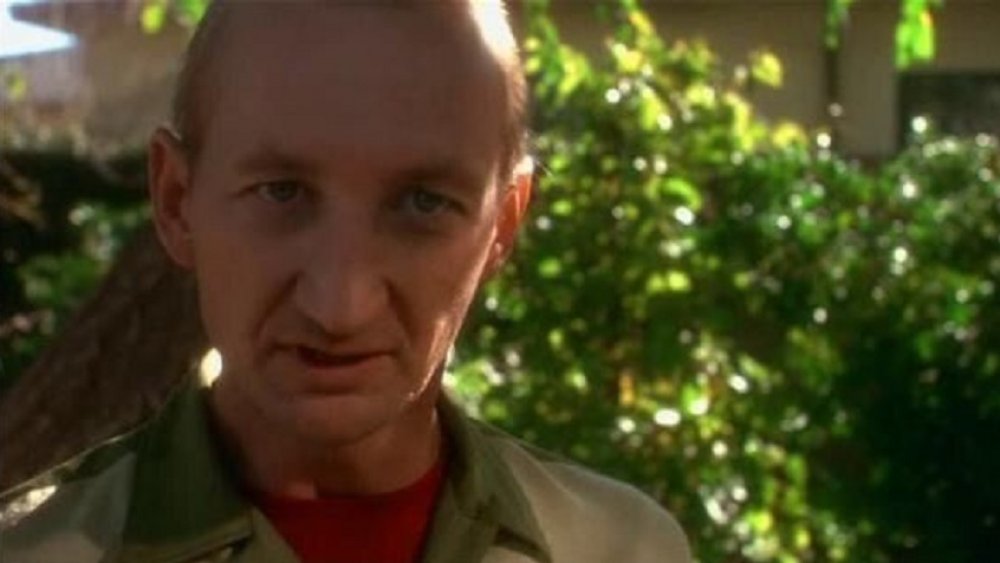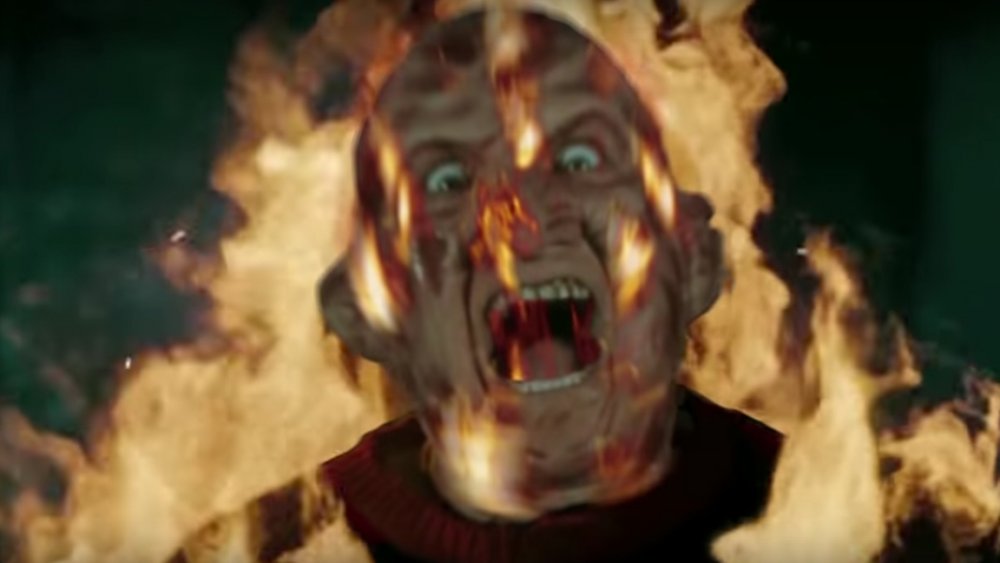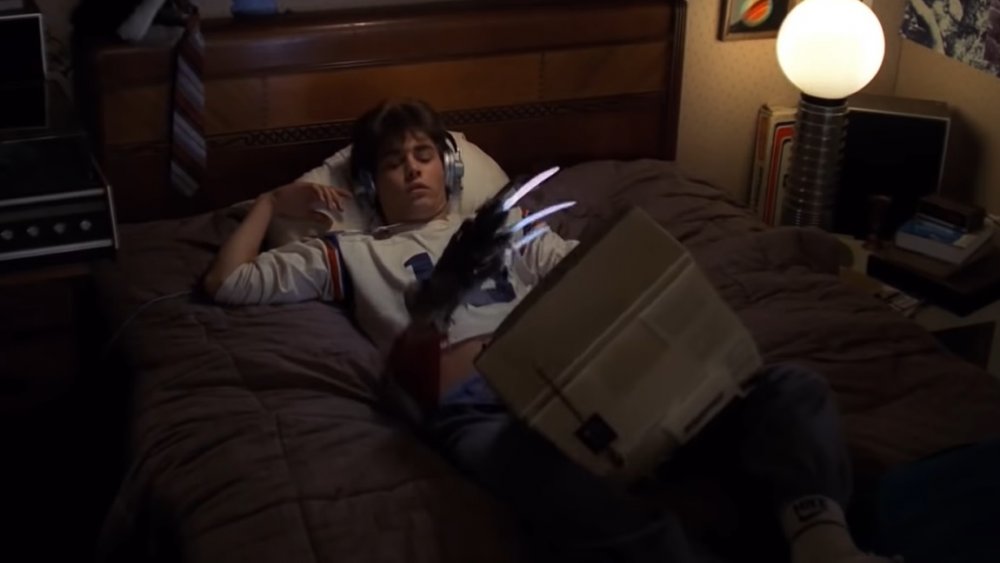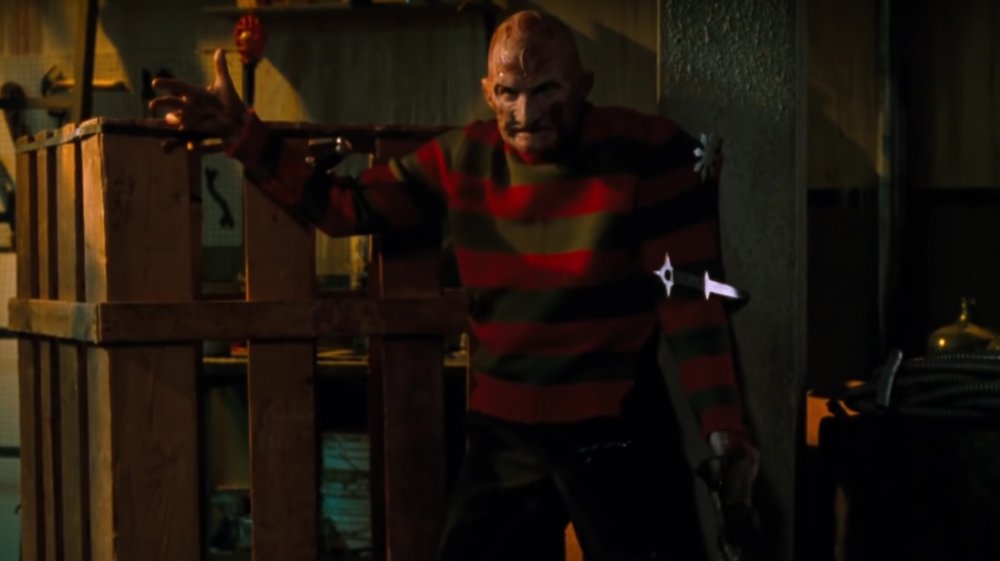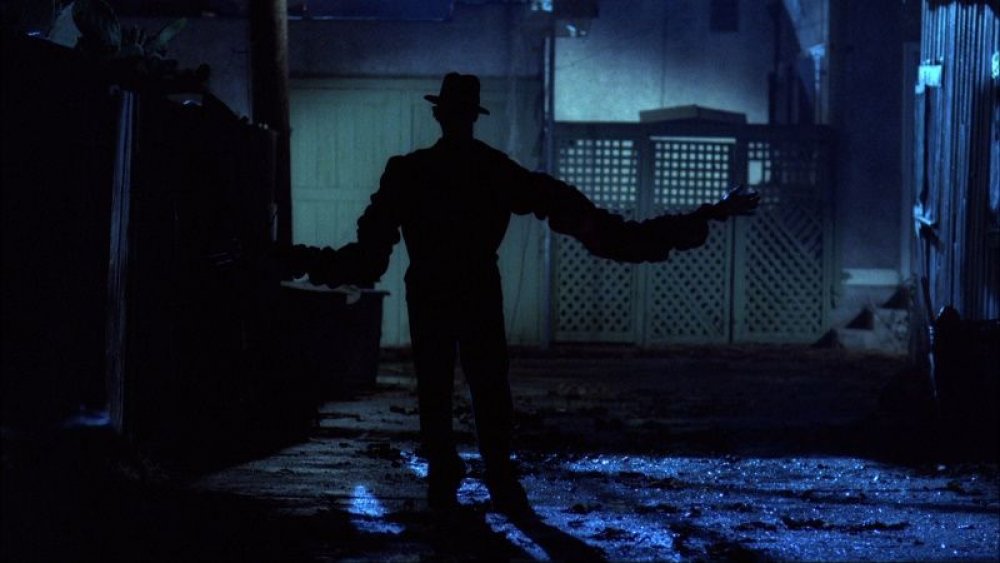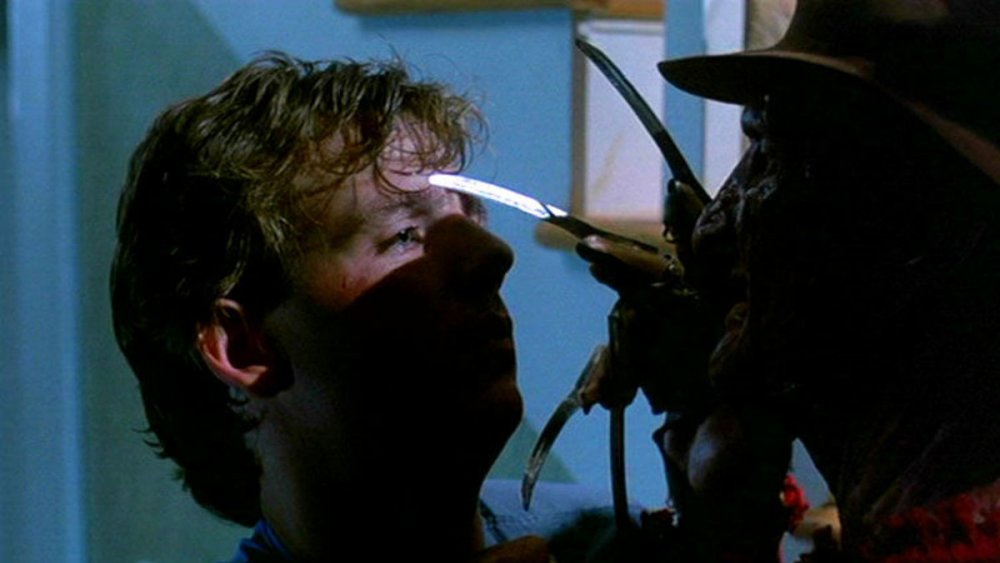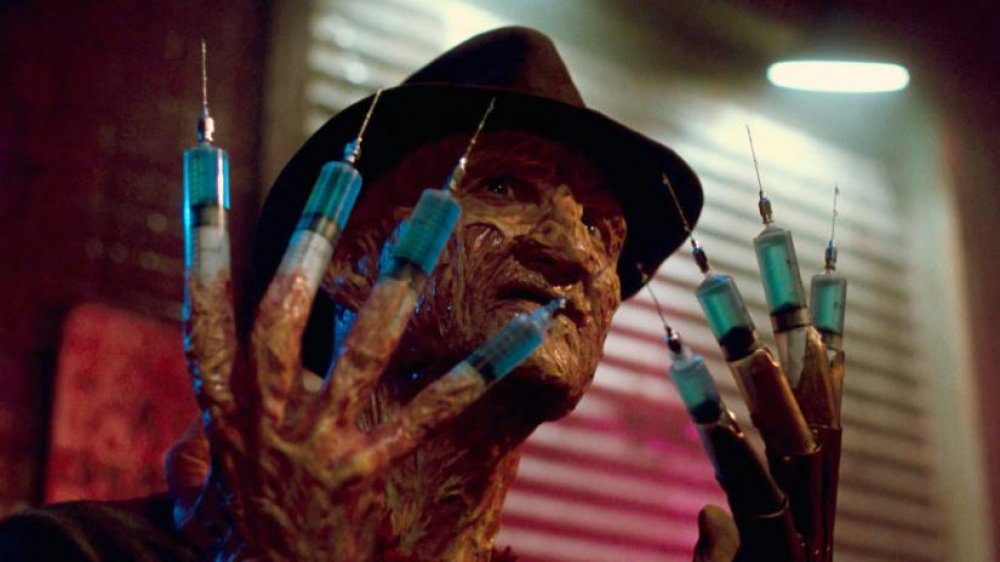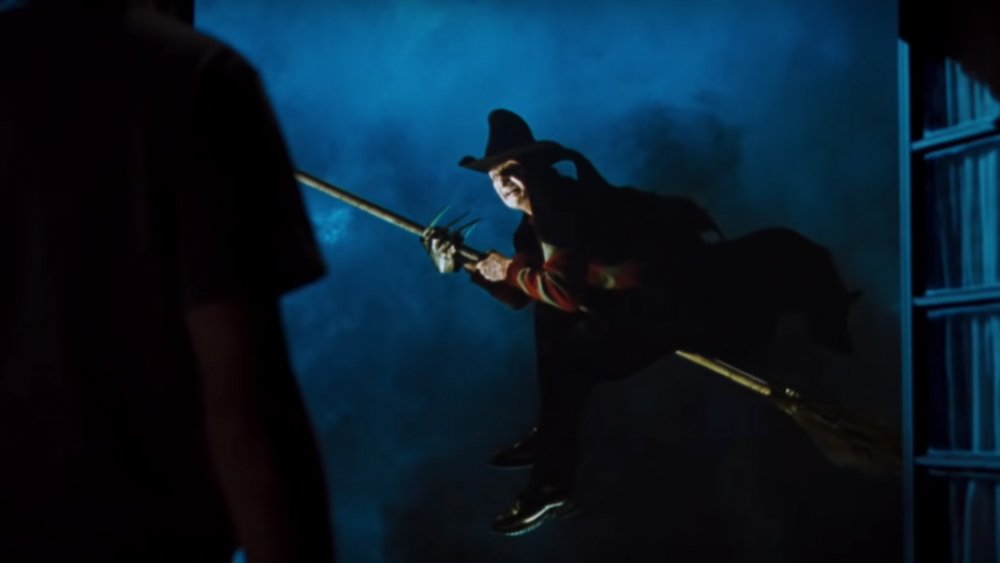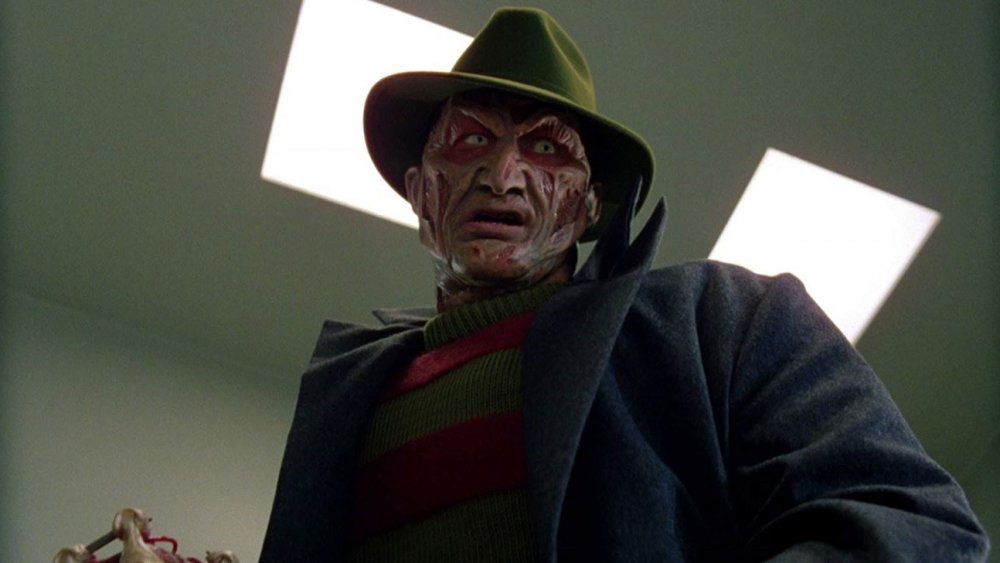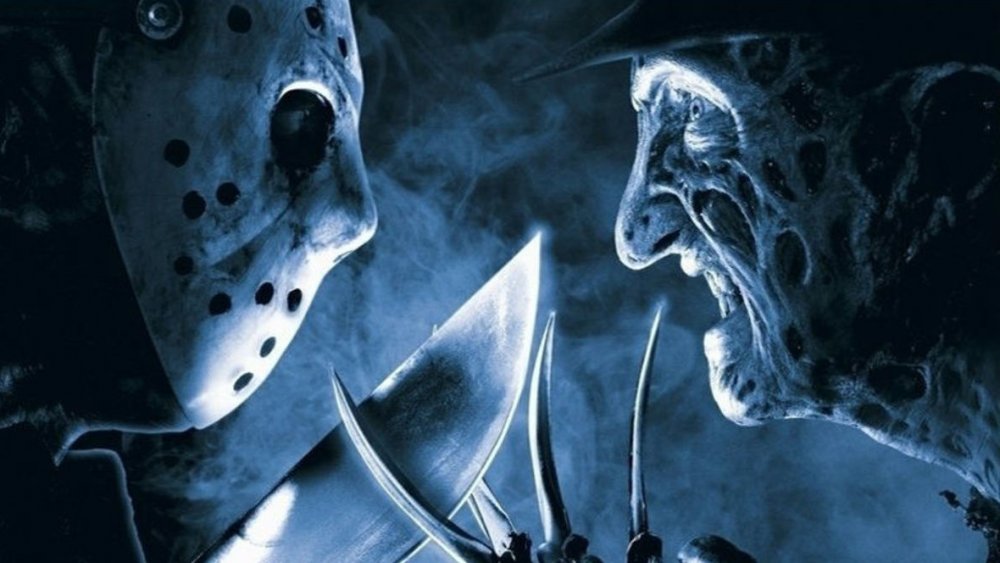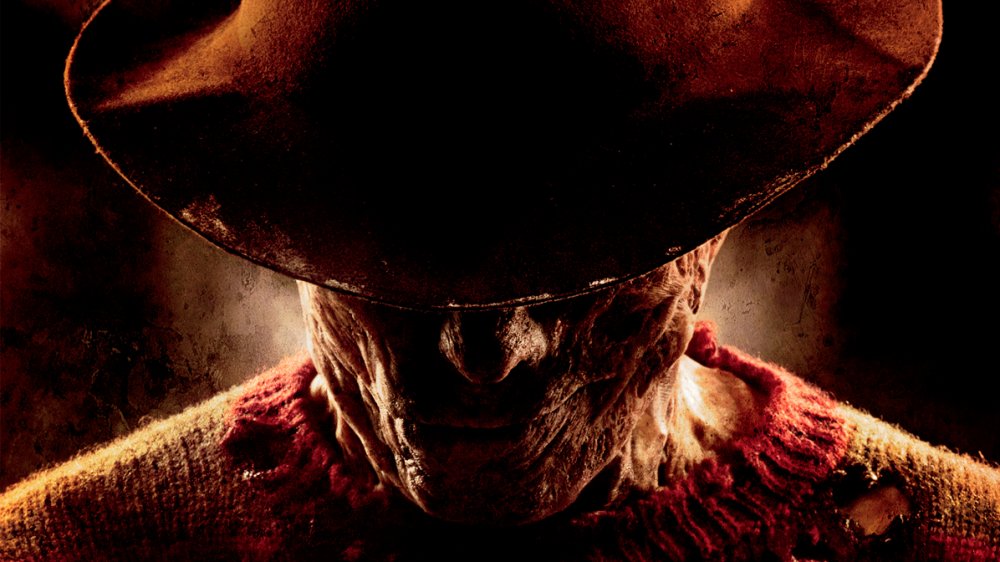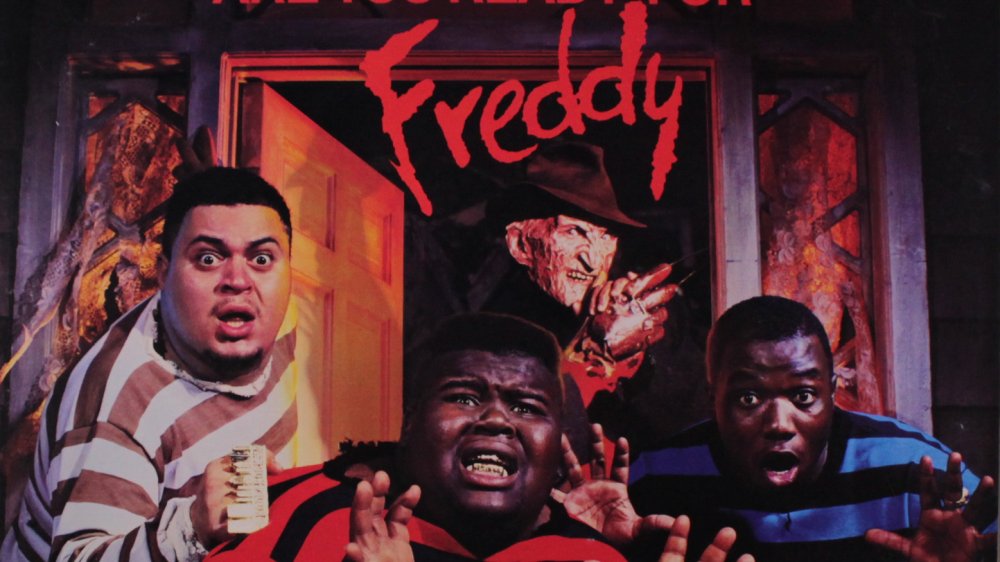Freddy Krueger's Backstory Explained
When one Frederick Charles Krueger first got out of our dreams and into our cars in 1984's A Nightmare on Elm Street, he was unlike anything that mainstream horror audiences had witnessed before. Mutilated, ruthless, and gleefully sadistic, Freddy had that movie monster "it" factor. He was intangible. He was aggressive. He was probably just a figment of your imagination, sweetie, so go back to bed.
And in addition to all of that, he was lucrative to the tune of nearly half a billion dollars. His meteoric rise to fictional stardom brought in its wake an international merchandising phenomenon, heralding everything from knife-fingered glove replicas to the irreplaceable "Freddy Fright Squirter."
But amongst all the celebrity hubbub and hullabaloo, we've lost sight of the most important questions. Questions like, "Who's the real Freddy?" "Why is he so angry?" And most importantly, "Wouldn't it be easier to just hold one knife like a regular murderer?" Seriously though, after decades of Freddy mythos, it's easy to forget where this killer came from, why he became so iconic, and what made him stand out from the rest of the slasher pack.
So today, we're taking a deep dive into the man behind the third-degree burns to understand him in ways you'd only ever dream of. From his monstrous conception to his showdown with Jason, here's Freddy Krueger's backstory explained.
The son of 100 maniacs
Things were never going to be easy for Frederick Charles Krueger. As chronicled in A Nightmare On Elm Street 3: Dream Warriors, his mother, Amanda Krueger, was better known by her chosen name, Sister Mary Helena. As a nun, she worked at the Hathaway House, an asylum for the criminally deranged. A few days before Christmas 1941, Amanda found herself the victim of a merry mix-up. She was locked inside the building when the guards went home for the long weekend, leaving the high-security hospital unattended, as is customary during the holidays. By the time she was found, she'd suffered a series of horrendous attacks at the hands of the inmates and was pregnant with "the bastard son of 100 Maniacs."
Nine months later, a bouncing baby Freddy was born. Never one to catch a break, he was adopted by an abusive alcoholic named Mr. Underwood, a man who looked distractingly similar to Alice Cooper. What followed was, predictably, sort of a huge nightmare.
Freddy Krueger's troubled childhood
Understandably, Freddy was a troubled child. His ersatz patriarch was drunk all the time and seemed to take a great deal of joy in beating his young ward with a belt. At school, Freddy was taunted mercilessly for his heritage. He started to exhibit the telltale signs of a fictional serial killer, murdering the class hamster and getting a kick out of cutting himself with a straight razor.
It would be delightful at this juncture to report that young Frederick experienced a moment of personal metamorphosis, switching gears and going from troubled loner to enthusiastic force for good, perhaps harnessing his understanding of the darker side of the human psyche to help others in their journey towards becoming useful members of society. Sadly, this was not the case. On one particularly unfortunate day, Freddy, unable to stomach the constant tirade of abuse from his adoptive dad, jammed his razor blade deep into the eye socket of his father figure. While a life mired in violence and tragedy is difficult to punctuate with definitive turning points, it could be argued that this was where any hopes of a happy life died, and the Springwood Slasher was born.
Freddy's domestic bliss
The events of Freddy's young adult life are murky, and it's not clear whether or not he ever faced any legal consequences for the murder of Mr. Underwood. What is known is that by his mid-20s, Fred Krueger was in the family way. He'd married a woman named Loretta who gave birth to a daughter, Katherine. Together, they lived what was, to the casual observer, a simple, happy, pedestrian life.
Lying just beneath the surface, however, was a dark secret. Freddy, unable to stem his unquenchable bloodlust, had constructed a secret room in the family's suburban home. Inside, he kept a series of homemade weapons, newspaper clippings, and memorabilia from his off-hours hobby, which was slaughtering the children of Springwood, Ohio, as the mysterious killer known as the Springwood Slasher.
Marriage is, if nothing else, based on trust, and the Kruegers' home life hit a speed bump when Loretta discovered Freddy's macabre man cave. Freddy, sort of cementing himself as a one note song, killed his wife in front of their young daughter. Shortly after this, he was arrested for the murders of numerous local children, and Katherine was put into foster care under a new name.
Pitchforks and torches
The arrest and subsequent trial of Fred Krueger sparked an onslaught of high tempers in the good folks of Springwood. The evidence condemning the Springwood Slasher was damning, and justice for the roughly two dozen children who died by his beknifed hand lay on the line.
Unfortunately, the United States penal system is far from perfect, and its fictional counterpart doubly so. Thanks to a misplaced signature and a drunken judge, Krueger was set free despite clearly being guilty. The parents of Springwood, however, were less than inclined to cotton to that sort of chicanery.
In a scene echoing the villagers' attack on Castle Frankenstein, the good folks of Springwood formed an old-fashioned vigilante mob, trapping Fred and soaking him in gasoline before lighting him on fire. Little did they know that as they watched the building burn to the ground, Krueger was being approached by Dream Demons. These supernatural entities offered Krueger the opportunity to carry on his sadistic ways indefinitely as their otherworldly antagonistic agent.
Freddy Krueger's powers and abilities
Thanks to Freddy's communion with the Dream Demons, he was gifted with abilities well within the realm of "altogether ookie." First and foremost, Krueger became a denizen of "the Dream Realm," a plane of existence where human subconscious thought takes place. While there, he had the ability to manipulate reality and affect unconscious humans, as long as he was still remembered and feared in the real world.
His control over the dream world seemed just about unlimited. He could change his shape, move objects telepathically, and warp the physical manifestations of dreamers. Additionally, in what had to be a paperwork catastrophe for any Elm Street homicide detectives and guaranteed overtime for whoever cleaned up the crime scenes, any damage that Freddy caused in a dream also happened in the real world. Blended into a geyser of blood and viscera in your nightmare? Your parents are in for a double dose of tragedy as your murder goes unexplained, and they never get the Kelley Blue Book value on your otherwise lightly used mattress.
Freddy's weaknesses
Being on the Dream Demon payroll has plenty of pluses, but it's not without its bummers. Foremost of these is the fact that you're pretty well stuck in the Dream Realm, a supernatural amalgamation of the collective unconscious. Re-entering the physical plane leads to nothing but trouble for Mr. Krueger, who becomes susceptible to pain and even death when living in our work-a-day vanilla dimension.
For example, in Freddy's Dead, the sixth film in the original franchise, Freddy's estranged daughter managed to pull him back to the real world, leaving him uncharacteristically vulnerable to being stabbed and blown up with a pipe bomb, which we would've marked "spoilers" if the movie hadn't been called Freddy's Dead.
In the meantime, life in the Dream Realm can be every bit as frustrating. Generally speaking, Freddy can only consume the souls of the residents of Springwood, barring outside intervention. Even then, his powers only work when the good folks of Springwood harbor a healthy level of active fear regarding Elm Street's favorite burn victim. If nobody remembers Freddy, he's nothing more than a bad dream. In later entries in the series, Krueger specified that it was only children's fear that gave him power, meaning that at any given time, he's just one generation of non-childhood-ruining bedtime stories away from going softly into that good night.
Freddy becomes a nightmare
So what happened to Freddy after making a deal with the Dream Demons? Well, 13 years after his unholy baptism by fire, Freddy made his first known appearance in the form we've all come to know and lose sleep over in A Nightmare on Elm Street. With his sick new menagerie of superpowers, he began to haunt the dreams of the children of Springwood, namely Tina Gray, Rod Lane, Glen Lantz, and our hero, Nancy Thompson. With vengeance for his death and skullduggery in his heart, he got down to the business of gruesome child murder.
The first to go was Tina, who started off the story proper with a bad dream about a disfigured, claw-handed man pursuing her through a boiler room. Tina made the age-old mistake of being a sexually active teenager in a horror film, and she paid for it in the form of a dream world glove-slashing.
Freddy would go on to drop Rod, Tina's boyfriend, with a swift strangulation, as well as Glen, Nancy's beau, in what's been described in the years since as the Great Depp Frappeing of 1984. Nancy, meanwhile, managed to beat back the nefarious killer, using nothing but her wit and her will. Or did she? At the end of the film, she certainly seemed to get dream murdered while Krueger played evil Knight Rider. Better not to dwell on it.
Freddy's Revenge
If the ending of A Nightmare On Elm Street was strange, the entirety of A Nightmare On Elm Street 2: Freddy's Revenge was at a whole different level. The rules that held sway in the first film sort of disappeared, and Freddy became a little less dream monster and, for one brief entry in a franchise that would go on to span decades, a little more of an out-and-out metaphor for repressed homosexuality.
It really can't be stressed enough how peculiar the second entry in the series was. The main character, Jesse, was an adolescent boy who moved into Nancy's old house on Elm Street. Rather than haunting the kid's dreams, Krueger would straight-up possess the lad, eventually taking over his body and physically manifesting in his burned-up form. The forces of ... something (maybe self control?) ... eventually won the day, and Freddy was sent back to the unconscious realm. It's, look. It's the odd duck in the series. Jesse's coach, dressed in his leather daddy goin'-out gear, got bombarded with sports equipment right before dying naked in the shower room. It's a cult classic, but not necessarily a classic classic.
Freddy Krueger vs. the Dream Warriors
After the weirdness of Freddy's Revenge, Krueger was back to his old shenanigans in A Nightmare On Elm Street 3: Dream Warriors. Here, we found out that the second most famous Fred ever to grace a neighborhood had been keeping busy since the sequel. All of the children from Elm Street had either been murderized or driven quite mad, with the survivors living together in an asylum. So there you go. That's the end of the story. Alexander wept, for there were no more worlds to conquer.
Only, there was a twist! The residents of the asylum were brought together by none other than Nancy Thompson from the first movie, now working in the hospital while researching dreams for graduate school. From there, a lot of information was presented pretty quickly. One of the patients, young Kristen Parker, had the ability to pull other people into her dreams. In those dreams, the folks inside were granted superpowers. Freddy, it turned out, could be defeated if his bones were buried and sanctified, which was something the good guys learned from the ghost of his dead mother. Freddy wound up down for the count thanks to a hasty burial, and nobody ever heard from him again.
Only they did. In about five more movies, depending on whether or not you count New Nightmare (we'll get to that), plus a cameo in a Jason film and a TV series. It gets sort of murky from here. Let's dive in.
The Dream Master, The Dream Child, and Freddy's Dead
A Nightmare On Elm Street 4: The Dream Master saw Freddy's return, as Nightmare On Elm Street sequels are wont to do. Here, he bounced back in a big way and put down all of those pesky kids from Dream Warriors like he was living some Scooby Doo villain's power fantasy. Here, he was taken down by Alice Johnson, a teenage sleep messiah and "Dream Master" capable of manipulating good dreams the way Freddy controlled the bad.
But you can't keep a good son of a hundred maniacs down, and Freddy, confusingly, birthed himself from the spirit of his dead mother in the fifth film, The Dream Child. He then tried possessing Alice Johnson's unborn baby, but he wound up personifying that whole "you go out the way you came in" chestnut when he reverted back to infancy and was re-absorbed by his ghost mom.
All of which brings us to Freddy's Dead: The Final Nightmare. Set years after the previous films in a Biff Tannen-esque future where Freddy finally achieved his goals, the movie takes place in a Springwood devoid of youth thanks to the knife-handed maniac. But what are accomplished ambitions if not a bitter reminder that the next generation will soon replace us? By the time the credits rolled, Freddy was reunited with his long lost daughter, who pulled him into the physical world and gave him a thorough stabbing, sending Krueger to Hell once and for all. Ish.
The Entity
These days, any brand-friendly fictional character worth his salt has been revamped, rebooted, and re-imagined at least half a dozen times. Freddy Krueger managed to get a head start on the trend with the decidedly bananas Wes Craven's New Nightmare.
Released in 1994, back when fourth walls were still considered to be generally load bearing, New Nightmare posited that an embodiment of evil could be contained within the essence of a fictional character, and that the concept of Freddy Krueger had become the home of one such "entity." Within the film, this supernatural force broke free of the confines of the fictional world, wreaking havoc on the production of a proposed new Nightmare on Elm Street entry and attacking the real-world people involved in creating the series, i.e. actress Heather Langenkamp and horror auteur Wes Craven himself.
Bonkers? Totally, and maybe a little less relatable than the relatively straightforward agent of ancient nightmare demons that audiences had become accustomed to. The movie tanked pretty hard at the box office when compared to other entries, but it got pretty decent reviews, scoring the highest Rotten Tomatoes rating since the original and arguably heralding other meta horror narratives like The Cabin in the Woods and Scream.
The grudges
A monster is only as good as its over-the-top smackdowns. In the noble tradition of Godzilla fighting King Kong and Batman v'ing Superman, Freddy Krueger has a decent history of playing king of the hill with other fictional freak shows.
The most famous of these came in the form of 2003's Freddy vs. Jason, the critically panned but long-awaited answer to the question, "What if we made a movie about Freddy fighting Jason but we didn't, like, try super duper hard?" It was a pre-MCU cross promotional extravaganza from the same era as Alien vs. Predator and Ballistic: Ecks vs. Sever, but it failed to recapture the special effects heavy, monster-on-monster, beat-'em-up spirit of classics like Kramer vs. Kramer.
Luckily enough for fans who felt like there was beef left unsquashed by the crossover, a sequel comic was released a few years later, and it added the one thing that can, mathematically, only improve on a product sprinkled in liberally: Bruce Campbell. The 2007 mini series Freddy vs. Jason vs. Ash (yes Ash, of Evil Dead notoriety) is entirely difficult not to love.
It's also worth mentioning that in a parallel world where things went just a little bit differently, Freddy would've had a whole new fight on his unwieldy knife hands. According to the screenwriters on Freddy vs. Jason, one potential ending that was scrapped over rights issues involved Krueger and Jason in Hell together being taunted by Pinhead of the Hellraiser series.
Freddy Krueger gets remixed
Out from the self-aware '90s and the kind-of-a-drag early 2000s came the dark age of gritty, ill-received reboots. And lo, there was 2010's A Nightmare On Elm Street.
Jumping in at the tail end of that couple of years when superheroes weren't quite 100 percent viable money printing machines and nostalgia still seemed like the Hollywood team to beat, the Nightmare on Elm Street reboot had all of the hallmarks of its time. Heavily color filtered, devoid of comic relief, and starring a lead actor who was probably too good for the material, it spoke its truth. "Hey," it seemed to say to the world, "what if Freddy Krueger, generally the only person in these movies who seems to be having a good time, was just gross and creepy and looked like a ghoul from Fallout 3?" And audiences responded with a mighty "who cares?"
The movie was a box office disappointment, and it somehow managed to nab a lower Rotten Tomatoes score than the great American cash grab that was Freddy vss Jason. Tenable aspects included some genuinely unsettling nightmare sequences and the added terror factor of outright stating that Krueger was a child molester, a detail that the earlier pictures skirted around. Less defensible points in the film were ... pretty much everything else. It failed so hard that it actually managed to waylay a Child's Play reboot for almost another decade.
Freddy's other outings
A light like Freddy Krueger's isn't something you hide under a bushel, and even during his cinematic slow periods, America's favorite charbroiled psychopath still finds excuses to get out of the house from time to time. Sometimes it's through a subtle nod, like when his glove appeared in Bride of Chucky and Evil Dead II. Wes Craven makes an appearance in Scream as a red-and-green-sweatered janitor named Fred. You can even see A Nightmare on Elm Street 5: The Dream Child playing at a movie theater in 2017's IT reboot.
In other media, Freddy himself danes to make an appearance. He pops up momentarily in Ready Player One, Steven Spielberg's CGI ode to paying for the rights to a bunch of movie characters. Robert Englund, the long-running original performer behind Freddy Krueger, made an appearance on the ABC sitcom The Goldbergs as his most famous character in 2018. Fans of unparalleled video game carnage will also recall that Krueger pops up in 2011's Mortal Kombat as a DLC fighter.
But none of these examples holds a candle to Freddy's true area of expertise: rocking the mic. Since his inception, the Springwood Slasher has been featured on a number of musical numbers that just scream "artistic integrity," including 1988's Fat Boys collaboration "Are You Ready For Freddy?" and, lest we forget, that single by Will Smith where a just-this-side-of-copyright-violation dream demon with knives for fingers murdered DJ Jazzy Jeff.
